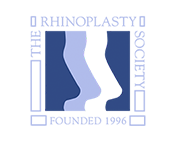
Our non-Caucasian patients often have a love/hate relationship with their bold, ethnic noses. They love that their look signifies and represents their cultural background but find that bump or hook less than desirable. These patients don’t want a teeny, tiny Western nose. They want to preserve their identity and tweak their appearance through rhinoplasty. For these patients, we recommend a specialized type of rhinoplasty called ethnic rhinoplasty.
What Is Ethnic Rhinoplasty?
Ethnic rhinoplasty is a term used by plastic surgeons and others to describe rhinoplasty performed on a non-Caucasian patient. It’s just rhinoplasty but often seeks to preserve ethnic features and a patient’s unique look.
If a plastic surgeon primarily works with Caucasian patients, ethnic procedures can prove difficult. We recommend finding a board-certified plastic surgeon with extensive rhinoplasty experience. Make sure your surgeon has worked with other patients of your ethnicity.
The Different Types of Ethnic Rhinoplasty
Ethnic rhinoplasty is a broad term and describes any rhinoplasty treatment on a non-Caucasian patient. It groups patients from different countries and even different continents together. A surgeon may say that they specialize in ethnic rhinoplasty, but with so many ethnicities, it is important to find one that really specializes in the region of the world where your genetics originate. Nasal structure varies substantially between different nationalities.
There are many subsets of ethnic rhinoplasty including:
- African rhinoplasty
- Asian rhinoplasty
- Hispanic rhinoplasty
- Middle Eastern rhinoplasty
These categories can be further divided. For example, patients of Chinese, Japanese, and Korean descent will have significant and noticeable differences in their nasal structures, but all fall under the classification of Asian rhinoplasty.
The Difficulties of Ethnic Rhinoplasty
Nasal structure isn’t the only complication surgeons face when working with non-Caucasian patients. Scarring can be a major concern, especially for patients with darker skin tones. Darker skin is more likely to develop raised, keloid and hypertrophic scars than lighter skin tones. Special care is needed to minimize scarring risk on open rhinoplasty procedures.
There are also noticeable differences in skin thickness and type. Some ethnic patients have thicker or oilier skin than the average Caucasian patient. Thicker skin can be more difficult to work with and is less responsive to subtle changes. Tip modifications are especially difficult to perform on patients with thick nasal skin.
The complexities of ethnic rhinoplasty can be difficult to master, especially for a surgeon that rarely performs surgery on ethnic patients. Dr. Epstein is a skilled rhinoplasty surgeon and regularly works with patients of many descents. He specializes in African-American and Middle Eastern rhinoplasty.
Discovering the Nose You Were Born to Have
Our rhinoplasty patients often explain that their nose feels out of place. Our goal with rhinoplasty is to create a nose that looks and feels natural. Dr. Epstein uses advanced rhinoplasty techniques to shape and contour the nose. By removing a bump or reshaping the nasal tip, we can create a nose that complements other features, instead of stealing the show.
We pay special attention to balance on our ethnic rhinoplasty patients. The nose is rarely the only unique or cultural feature our patients possess. We seek to create a balanced, complementary look that retains a patient’s ethnic and cultural appearance.
To ensure the right fit, we use computer imaging to provide patients a preview of the new look, before surgery.
Ethnic rhinoplasty seeks to enhance your unique look, not erase it. Call Dr. Epstein at 847-205-1680 to schedule a consultation with one of Chicago’s best ethnic rhinoplasty surgeons. If you live away from Chicago, call the office to schedule a virtual consultation and learn more about flying in for your procedure.





